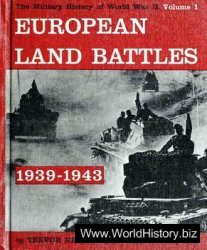Tamerlane (a corruption of the Persian Timur-Lenk, i. e. Timur the Lame) was in origin a minor chieftain of the Barlas, a Turkicised Mongol clan, who managed to create an extensive empire based on Transoxiana and its capital of Samarkand, of which he became ruler in 1370. At its greatest extent this empire included
Transoxiana, Khwarizmia, Persia, Azerbaijan, Afghanistan, Turkestan and parts of Iraq and Anatolia, in addition to which his armies smashed the Golden Horde and the sultanate of Delhi, humbled the Mamluks in Syria, and inflicted such a crushing defeat on the Ottomans at the Battle of Ankara in 1402 that their own empire was briefly in danger of collapsing entirely. However, Tamerlane’s death in 1405 resulted in the fragmentation of the unstable power bloc he had created, with mutually hostile Timurid dynasties establishing themselves in Herat, Khorasan, Transoxiana and several smaller principalities. Of these the most important was that of Herat, ruled by his youngest son Shah Rukh (1405-47); after the death of Shah Rukh’s son Mirza Ulugh-beg in 1449 it was conquered by the Aq-Qoyunlu, who went on to seize most of Khorasan in 1469, defeating and killing Ulugh-beg’s grandson Abu Said. The decline continued thereafter, and Timurid rule in Persia finally came to an end in 1507, little more than a century after it had begun.
As with the Tartars of the Golden Horde (see page 72), organisation under Tamerlane remained exactly as it had been under Genghis Khan. Units therefore comprised the onlik or arban of 10 men, commanded by an onbashi; the yuzlik or khoshun of 100 men commanded by ayuzbashi; the binlik or minghan of 1,000 men commanded by a binbashi (also called a ginbashi or mingbashi)', and the tuman of 10,000 men commanded by an amir. Units called alai also occur in the sources, probably binliks since their officers are often called alai-beguys (cf. the Ottoman ala-bey)', similarly, the unit called a fewdj that is sometimes encountered, usually translated as ‘squadron’, was probably the same as the khoshun. On the battlefield all these units were grouped into left wing {tchouwanghar), right wing (borounghar), centre {qul) and advance guard (manghlai), the centre being comprised of the khan’s guards and elite troops. Tamerlane’s personal guard at the Battle of Kondurcha River in 1391 was selected from the bravest soldiers in the army and comprised 20 khoshuns, i. e. 2,000 men.
Few reliable figures are available for the total strength of Timurid field-armies, but 72,000 men were apparently involved in the 1393 campaign into Persia, and the army that marched aganst Delhi in 1398 allegedly comprised 92 binliks. Less credible figures are the 200,000 claimed for both the 1391 campaign against the Golden Horde and the proposed campaign against China in 1405, and the army of 240,000 that reputedly participated in the invasion of Syria in 1400-1. Any truth that there may be in such enormous figures can only be explained by the majority being non-combatants — the source that mentions the army of 240,000 in Syria actually says that it ‘included’ 30,000 soldiers, which seems to be independently confirmed by another source that says Tamerlane on this occasion ‘led almost 30,000 men with him’. Ruy Gonzalez de Clavijo, who visited Tamerlane’s court in 1404, actually wrote of the Timurid army setting out on campaign that ‘when Tamerlane calls his people to war all assemble and march with him, surrounded by their flocks and herds, thus carrying along their possessions with them, along with their wives and children. These last follow the host, and in the lands which they invade their flocks — namely and particularly the sheep, camels and horses — serve to ration the horde... You must understand further that none of these Chagatais, when on the march with the host, ever separate from their women and children or from their herds and flocks.’ He even refers to the soldiers’ wives being employed in a tactical role on one campaign: ‘Tamerlane issued orders that all the women who marched with his soldiers should don helmets along with men’s war-harness to play the part of soldiers. . . Thus the camp was left in charge of the women disguised as warriors’. (Bertrandon de la Brocquiere similarly refers to the readiness of Turkish women to bear arms, recording both that the Ottoman amir of Kayseri had ‘under his command 30,000 Turcoman soldiers, and about 100,000 women as brave and as fit for combat as men’, and that in Albistan, on the frontier with Timurid Persia, the Dhul-Kadiroghlu Turcoman confederation had ‘30,000 women who thus bear the tarquais’, as well as 30,000 men.)
All Timurid soldiers were paid 6-monthly, troopers receiving a sum equal to the market value of their best horse, or 2-4 times as much in the case of elite troops. Of their officers, the onbashi received 10 times the pay of a trooper, the yuzbashi 3 times as much as the onbashi, and the binbashi 3 times as much as the 3oizbashi plus a grant of land, whilst the amirs received large estates akin to the Moslem iqta. Inevitably, the Timurids themselves, being Central Asian nomads (in fact mostly Turks, though they are often referred to as Mongols or Tartars for convenience), were all cavalry, with whatever small numbers of infantry they fielded being provided by sedentary subject peoples.
One interesting difference between Tamerlane’s army and that of Genghis Khan was that whereas the latter, when he captured elephants in Khwarizmia made no attempt to use them in war but turned them out to die in the desert, Tamerlane seems to have been fascinated by those he captured in India. As many as 90, 100 or 120 were taken following the Battle of Delhi, and despite the poor showing they had made in the engagement most of them were subsequently taken into the Timurid army. Monstrelet’s chronicle claims that Tamerlane’s forces at the Battle of Ankara actually included 26 elephants which ‘had small castles on their backs, in which were many men-at-arms who grievously annoyed the enemy’, while Schiltberger, who fought on the Ottoman side in the battle, puts the number at 32 ‘trained elephants’, which were sent into action after midday. Mirkhwand and Sheref ed-Din likewise confirm the presence of elephants. Even after Tamerlane’s death in 1405 Timurid armies continued to occasionally field elephants, as in the case of his successor Shah Rukh’s army at the Battle of Alashkert (against the Qara-Qoyunlu) in 1421.
Gunpowder artillery may also have been introduced under Tamerlane — certainly the terms ra’d (‘thunder’) and qarabugha (‘black camel’), both thought to denote gunpowder artillery, make their first appearance in 1379, when whatever weapons they denote are recorded by Muin al-Din Natanzi being used at the siege of Urganch. The same terms are also used by Nizam al-Din Dhami, who drew an unfavourable comparison between the Delhi sultanate’s fireworks and rockets, as used at the Battle of Delhi, and Tamerlane’s ‘loud-throwing guns’. In Shah Rukh’s reign a gun-founder named Farrukh is recorded to have made a kaman-i ra’d that could fire stones weighing 400 maund.




 World History
World History









